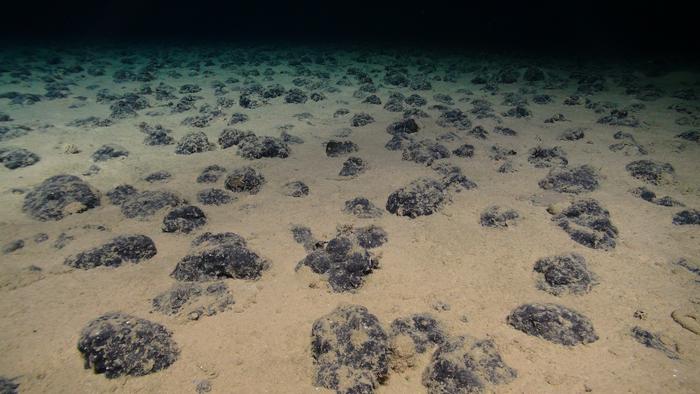Marine ecosystems, particularly those hidden beneath the depths of the Pacific Ocean, are increasingly at risk due to the burgeoning demand for rare metals utilized in modern technology. A recent study published in the esteemed journal Nature sheds light on the enduring impacts of deep-sea mining conducted nearly half a century ago. This research highlights the urgency to understand and mitigate the ecological consequences of human activities in these remote environments. As we delve into the specifics of this study, we uncover alarming insights regarding biodiversity loss and the slow tempo of recovery processes that affect marine life.
The research references a mining experiment conducted in 1979 within the North Pacific’s Clarion-Clipperton Zone. Notably, this region stretches approximately halfway between Mexico and Hawaii, characterized by a vast, flat expanse known as an abyssal plain. Researchers have returned to this historic site to investigate the long-term environmental repercussions of the deep-sea mining trial. Four decades post-excavation, scientists observe persistently lowered levels of biodiversity compared to unaffected neighboring sites, with implications for both marine species and ecosystem resilience.
Led by scientists from the National Oceanography Centre in Southampton, the study engages a robust multi-institutional collaboration including esteemed entities like the Natural History Museum in London and the British Geological Survey. Together, they aim to elucidate the ecological ramifications of deep-sea mining, specifically targeting the mineral-rich nodules that harbor critical metals such as cobalt and nickel—elements vital for powering electric vehicles and advanced technological devices. With over 21 billion tonnes of these nodules estimated to blanket the seabed across the expansive Clarion-Clipperton Zone, the stakes are alarmingly high.
The research team, partaking in a project titled Seabed Mining and Resilience to Experimental Impact (SMARTEX), has endeavored to quantify ecological impacts associated with deep-sea mining. Their findings reveal that not only do nodules play an essential role in providing habitat structures, but they also serve as oxygen-producing entities crucial to maintaining deep-sea biogeochemical cycles. The researchers express concern that the extraction of these nodules might diminish oxygen levels and jeopardize the delicate balance of marine ecosystems.
Dr. Mark Hartl, a marine biologist and co-author of the study, expressed the urgency of assessing the ramifications of sediment disturbances from mining activities. His team has developed novel methodologies intended to measure alterations in the DNA of deep-sea fish and how these organisms respond to sediment exposure. As mining companies consider exploiting these rich oceanic resources, countless questions linger regarding the cascading effects of these actions on marine fauna and flora.
During their analysis, scientists note that the mining site, where a 14-meter long machine was trialed in 1979, still harbors visible scars, signaling the enduring disruption caused by human activity. The physical indicators of disturbance, such as barren patches and mining vehicle track marks, persist prominently on the seabed. The ramifications of these disturbances extend beyond merely visual scars; they herald a potentially prolonged impairment of ecological recovery, challenging assumptions regarding deep-sea resilience.
Despite the mining test’s closure, marine life remains hindered from fully recuperating as evidenced by the continued reduction in populations of certain organisms. While some species show initial signs of recovery, the research suggests a longer timeline may be necessary for these ecosystems to regain their pre-disturbance conditions. The findings underscore a fundamental principle in ecological theory—that recovery from disturbance is neither uniform nor prompt. It raises critical considerations for future policymaking regarding the sustainable management of oceanic resources.
The research brings to light significant concerns surrounding the burgeoning interest in deep-sea mining amid the world’s increasing technological demands. As the International Seabed Authority grapples with regulatory frameworks to manage potential mining operations, experts like Dr. Adrian Glover from the Natural History Museum emphasize the importance of gathering data on these recovery timescales. Understanding the complex resilience mechanisms inherent to deep-sea environments becomes paramount in informing essential environmental protection policies and practices.
These revelations coincide with a growing recognition of deep-sea ecosystems as vital components in climate change mitigation strategies. As materials derived from these environments promise advancements toward achieving a net-zero carbon future, the need for rigorous research-informed regulatory measures becomes even more pressing. The complex relationship between mining activities and ecological health necessitates careful scrutiny and intervention.
The research team has made definitive strides in advancing our comprehension of how deep-sea mining impacts biodiversity and ecosystem structures. Their groundbreaking study provides crucial insights into the interplay between human manipulation of oceanic resources and the slow recovery of affected habitats. This research presents an urgent call for comprehensive assessments of the long-term consequences of human activities in previously untouched marine realms, reinforcing the inherent value of these complex ecosystems.
In conclusion, as we navigate the uncharted waters of deep-sea mining, this study serves not merely as an academic insight but as a clarion call to prioritize ecological stewardship. The findings emphasize our shared responsibility to protect these fragile ecosystems from irreversible harm in pursuit of technological progress. Policymakers, scientists, and stakeholders must converge to ensure a sustainable balance between resource extraction and ecological integrity in the deep ocean.
Subject of Research: Animals
Article Title: Long-term impact and biological recovery in a deep-sea mining track after 44 years
News Publication Date: 26-Mar-2025
Web References: https://www.nature.com/articles/s41586-025-08921-3
References: A comprehensive list can be provided upon request.
Image Credits: National Oceanography Centre
Keywords: Deep sea mining, biodiversity, marine ecosystems, sediment disturbance, ecological recovery.




